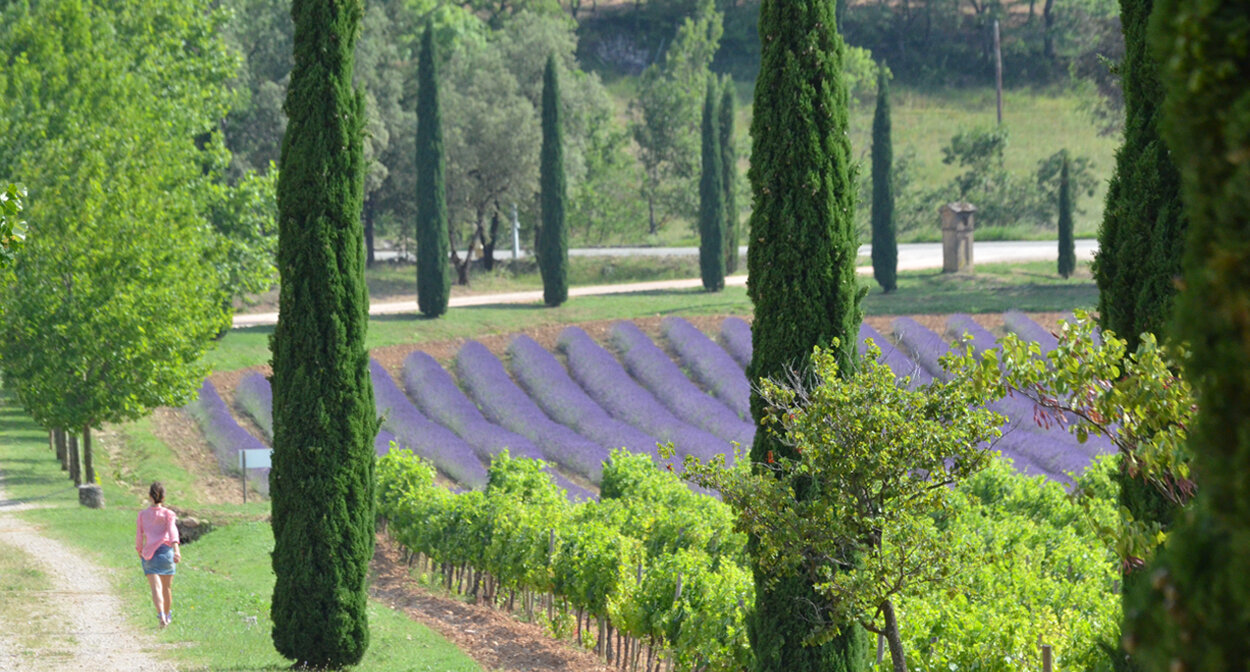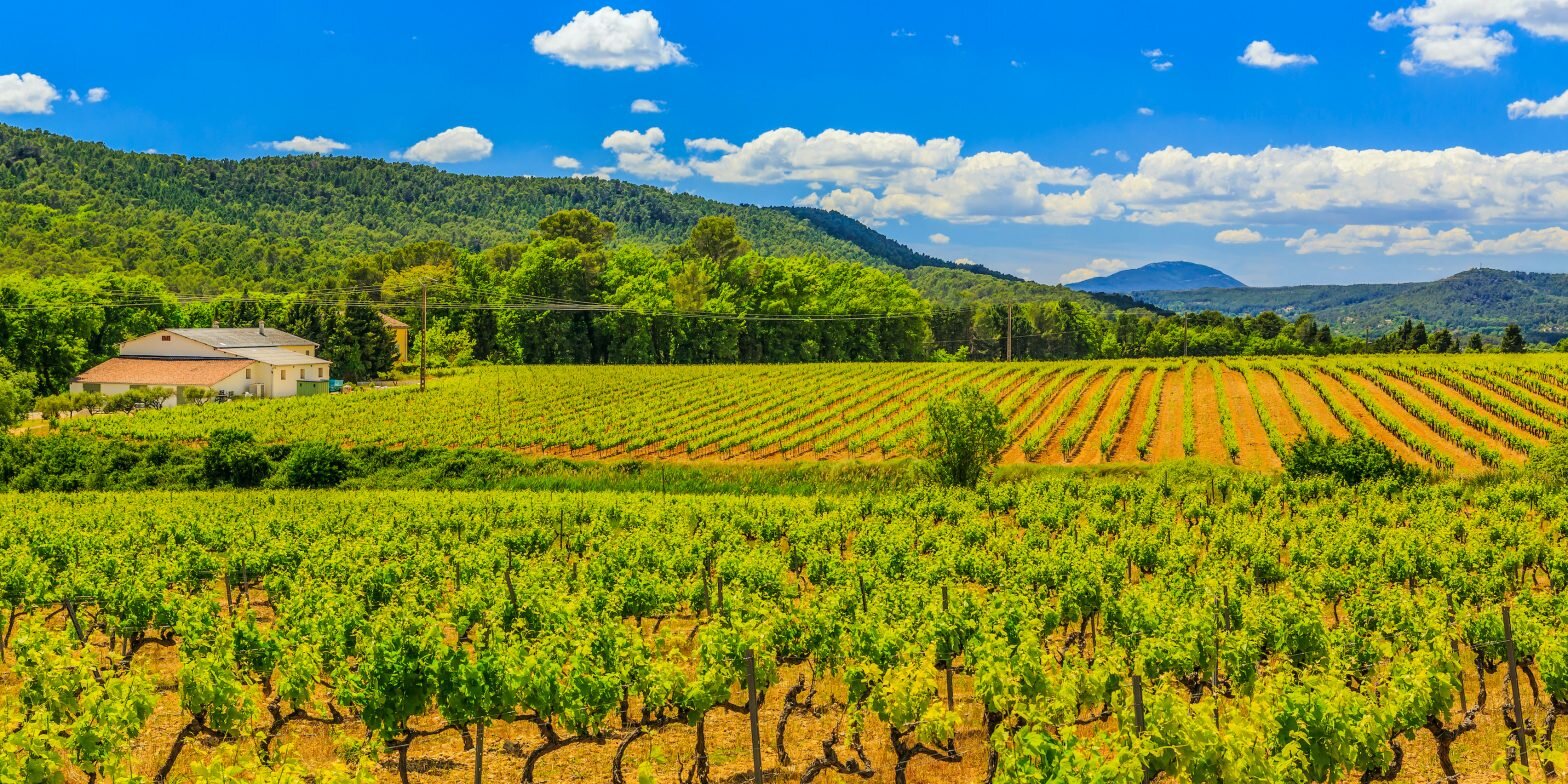Drinking Pink – Provence Rosé
It’s summertime, or at least the dying embers of summer, which means several things: barbecues (in the rain), evenings spent outside and rosé wine. Over the past twenty years rosé wine has gone from a niche tipple, the younger, more awkward sibling of more serious white and red wines, to an artisan offering, a wine to be seen with and represented by an ever-growing number of respected producers.
How is rosé made?
Well its certainly not by mixing red and white wine together! The process actually requires finesse, expertise and immaculate timing. Red grapes are pressed to release the clear-ish juices but the skins are left in contact with the juices to macerate for a couple of hours, taking on colour, flavour and some of the tannins. Think of it as leaving a tea bag in with a bowl of water: the longer the tea bag is in the water, the more tannin, colour and flavour the water will take on.
Provence is the undisputed champion of world rosé, though that isn’t to say that other regions don’t make excellent examples. In a region synonymous with lavender, sunflowers, and olive trees, a remarkable 88% of the area’s wine production is dedicated to rosé. Its climate is perfect for growing red grapes like Grenache, Syrah, Mouverde and Cinsault, with 2,700 to 3,000 hours of sunshine a year (vines require 1,400 hours to be feasible), largely dry conditions, gentle slopes and shielding valleys. Because of strict rules prohibiting the addition of sugars to rosé wine, the region has become known for its pale salmon, dry wines, as opposed to the sickly sweet and darker hued wines you see lower down on the shelves in your local supermarket – you know the ones, dark rose in colour as opposed to an elegant pale pink - avoid them at all costs.
Several notable brands have carved out a niche in the market with elegant branding or a celebrity link: Whispering Angel is a good rosé with an even better hype machine, Brad Pitt and Angelina Jolie owned Château Miraval with its curvaceous bottle, and even Kylie Minogue has recently released her own! Interestingly, Cave d’Esclans who make Whispering Angel, as well as a whole stable of other rosé wines, also make Garrus, which is their attempt at making ‘the Dom Perignon of rosé wine’. It is, I am pleased to say, a fantastic wine, certainly the best rosé I’ve ever tasted, but at £100 a bottle I feel it asks far too much.
Some of the Cave d’Esclans range, featuring that pricey but delicious ‘Garrus’
Perhaps I’m not affording rosé the respect it deserves as an artisan wine, as plenty of producers of all colours of wine make a top cuvée that sells for well over £100 a bottle – so is the problem me, you…..us? Are we perhaps not taking rosé seriously enough by not spending enough on it? I’m not so sure. There are a myriad of wonderful producers who make rosé available for between £10 and £20 a bottle and while they continue to offer real value for money, it seems a bit mad to implore to drop a hundred smackaroos on Garrus. Pervese, in fact.
My tip, as ever, is to look for value by going off the beaten track and swerving the big brands, so I’m pleased to present two Provence rosés from Tesco and a third from Lea & Sandeman, which I’ve tasted: Studio by Miraval (the second wine from the aforementioned Brangelina property) at £12 a bottle, Roseline Prestige Cotes De Provence at £15 a pop and the organic Rosé de Léoube at £16.95. All were tasted in the sun and delivered brilliantly for the price, you won’t be disappointed with any, nor will your bank manager, although I do have a slight favourite….
A reminder of the Sour Grapes rating system, where a 1 is a good value wine can be read here
Studio by Miraval - £12
Colour: Pale salmon, blush.
Nose: The nose here is simple but attractive, giving off strawberries, raspberries, white peach, pink grapefruit, light spice and a clean mineral note.
Palate: Tasting this on a hot, sunny day was like diving into a cool swimming pool on holiday. Although at its coldest it was quite tight on the palate with red fruits and rhubarb, it did open up a little more as the glass warmed, with light spice and pleasing minerality and salinity. This is a good everyday wine which won’t let you down, with clean lines and direct, refreshing acidity, crisp and dry.
Roseline Prestige Cotes De Provence - £15
Colour: Pale salmon pink
Nose: A slightly more brooding nose than the Miraval, with red fruits, minerality and a hint of Mediterranean scrub.
Palate: This is a really pleasing wine, much more opulent and juicy on the palate that the Miraval, with ripe red berries and a more sumptuous, almost curvaceous mouthfeel. There is good minerality, with fruit acidity adding to the sense of freshness. There is a hint of tannin and some white pepper on the finish. This is a lovely rosé, perfect for quaffing but I feel it would stand up equally well to food because of its added complexity. It is as elegant as its fancy clear glass bottle – this is a joy to drink.
Cháteau Léoube – Rosé de Léoube (vintage not given) - £16.95
Colour: Pale salmon pink
Nose: Strawberry, raspberry, nectarine peel, crushed stone and white peach are evident pretty quickly.
Palate: This is a bone-dry rosé, with crushed red fruits and some white pepper on the finish, which is medium in length. There is good acidity and freshness here although for me it lacks a little more body and sexiness, perhaps because it is organic, or perhaps in spite of that, but it would make for excellent quaffing on its own. I picked up this bottle at Daylesford Organic at a pricey £18 but you can buy it online with Lea & Sandeman for £16.95, should you want to feel part of the Chipping Norton set.











